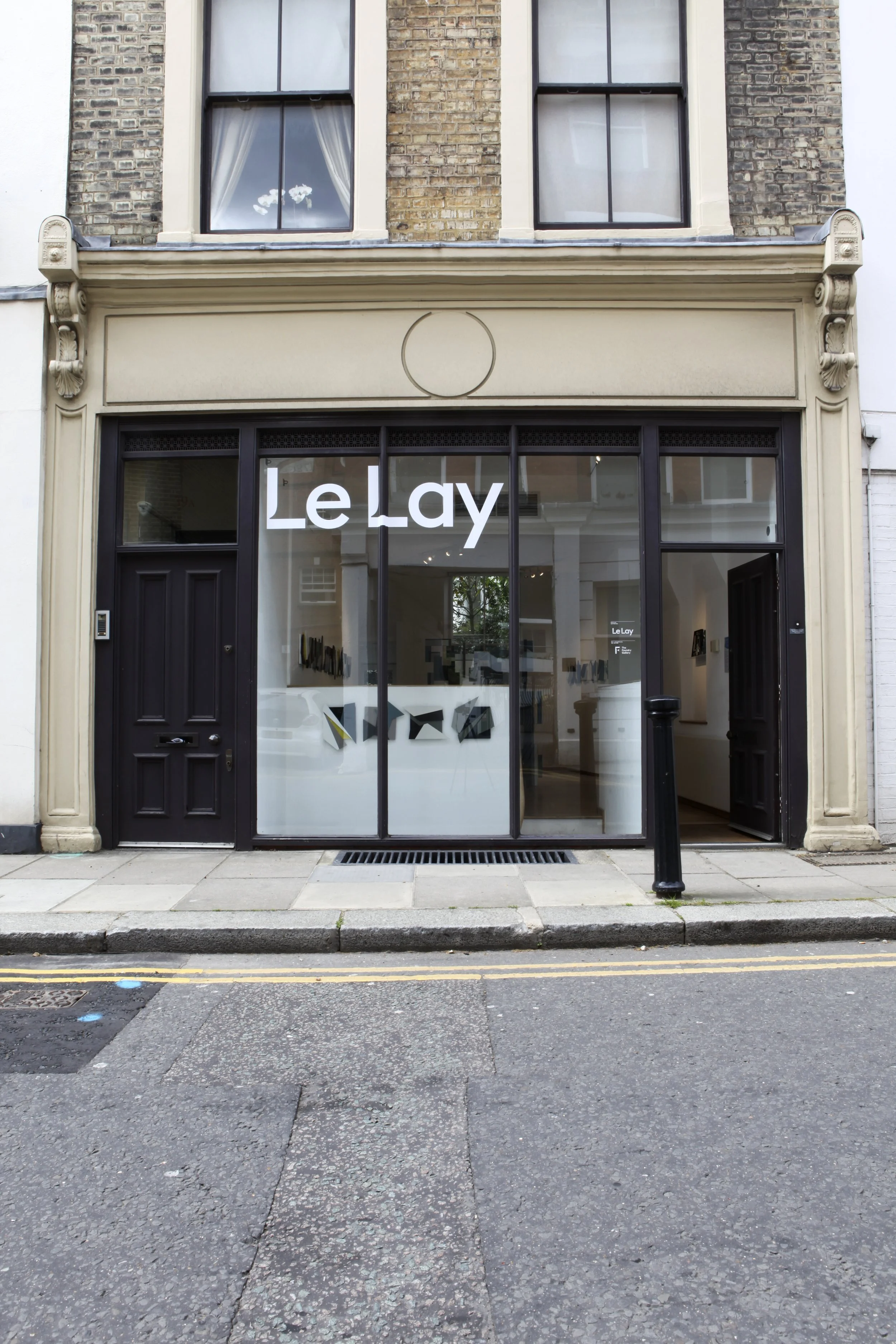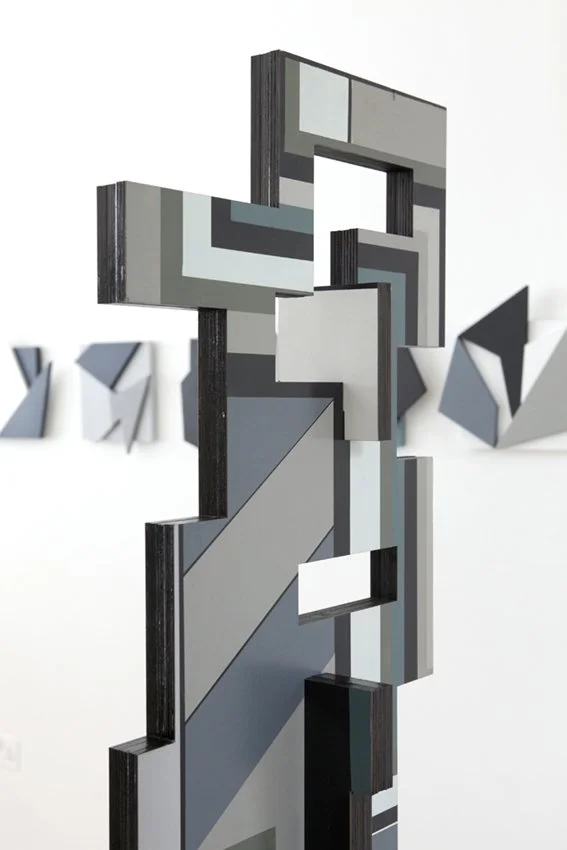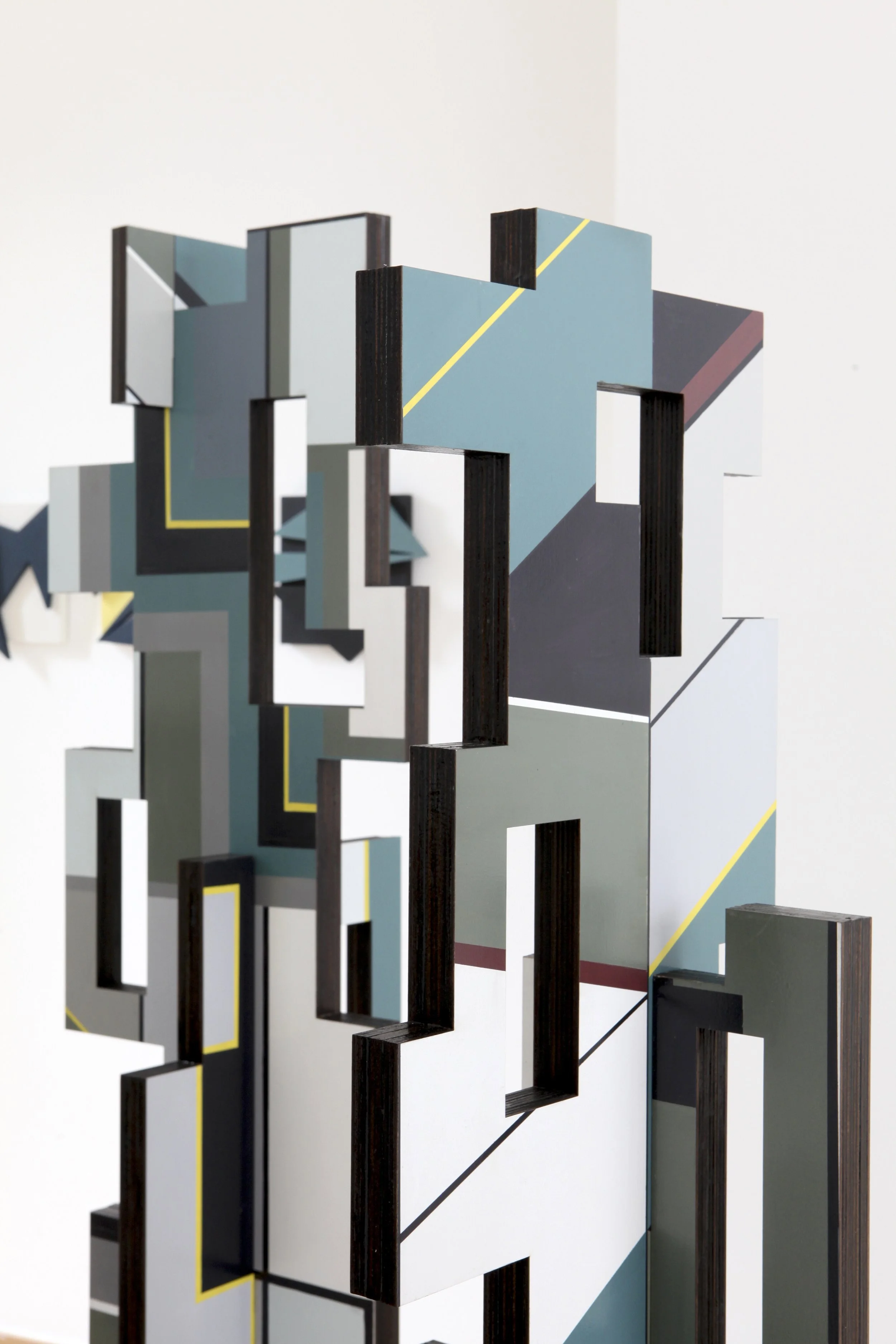Lisa Traxler
Blast Wall, 2021
Blast Wall : ‘A blast wall is a barrier designed to protect vulnerable buildings or other structures and the people inside them from the effects of a nearby explosion, whether caused by industrial accident, military action or terrorism.’ (Wikipedia, 2020). Genius Loci : Contemporary usage refers to a location’s distinctive atmosphere its ‘spirit of the place’ rather than the guardian spirit. (Wikipedia, 2021).
When does a place become a home? Is it the building, your belongings, memories created, the everyday ordinariness or a place of safety and comfort that we retreat to? Lisa Traxler’s solo show BLAST WALL explores the notion of “Home” and her relationship to her own distinctive home, charting her experience of living within a World War Two radar bunker on the south coast of the Isle of Wight.
In 2015 Lisa Traxler and her partner purchased a derelict WW2 radar station the decommissioned RAF St. Lawrence (1) in order to build a house that would incorporate the ruin of this brutalist, concrete bunker. Traxler was closely involved in the building of the house and living on site during construction coupled with the historical importance of the plot has had a significant effect on her artistic practice and the materials and processes she uses. Living within the shadow of this monumental construction, with its clean, sharp lines in contrast to the rugged coastal weatherworn landscape has led the artist to contemplate its history and forge a deep association with the location, creating an environmental autobiography - a sense of self and place intimately connected.
This relationship with the artist and her radar bunker has grown in significance during the covid-19 lockdowns of 2020 and 2021. Quietened by the noise of ‘outside’ and tethered to both the physical and metaphysical home, Lisa tracked the arc of the sun within the blast wall area through photography, watching time pass in the form of light and shadow. The Blast Wall (2) itself, with its distinct spatial properties, is a concrete structure open to the elements but sheltered by its thick textured hand-built elevations. Two triangular entrances either end give the viewer an uninterrupted vista to the landscape beyond.
This series of catalogued images has given Traxler a unique set of information, blueprints of her home which have been articulated into the sculptures and drawings for this exhibition. This topographic study of the place’s atmosphere is fundamental to Traxler’s body of work. The shapes created by light and shadow are recreated with geometric precision in her two and three-dimensional works, a response to her personal experience of this place. The British painter Paul Nash talks of this sense of place “It was undoubtedly the first place which expressed for me something more than its natural features seemed to contain, something which the ancients spoke of as genius loci – the spirit of a place....its magic lay within itself, implicated in its own design and its relationship to its surroundings” (R.Cardinal, 1989).
Whilst the exhibition Blast Wall talks about the architectural structure of a piece of defence architecture it also alludes to the emotional history of this period of time, through a collection of military letters recently rediscovered by her family. The artist’s great uncle was a Lance Corporal posted overseas during the Second World War, he wrote frequently to his sister about his yearning for ‘Home’, missing not only his loved ones but also the domesticity of everyday existence. Each time he wrote the word Home he used a capital H elevating this word to describe the spirit of place, his genius loci.
Traxler is continually experimenting with the inter-disciplinary nature of contemporary art and is comfortable working in both two and three dimensions whilst exploring ways to bring the two together. Her works are concerned with her connection to her immediate landscape and often incorporate historical references. Hers is a landscape of ‘place’, an abstract concept rather than a traditional depiction.
Six painted ‘Ghost’ sculptures stand tall within the gallery, constructed from multiple poplar plywood panels meticulously hand painted on all sides. This process follows weeks of drawing and maquette building in the artist’s studio with the final procedure offsite and the painted panels fabricated in an industrial setting. These upright pieces slot into each other creating floor-kkbased works which are to be viewed in the round - an immersive experience of Traxler’s paintings. Within these shaped forms apertures are cut, echoing the blast wall slots and openings, through which the landscape wall piece ‘20 Letters’ can be viewed. This wall sculpture alludes to the twenty letters from the artists’ family history whilst also creating a lineage in her work, utilising excess shapes from previous works. These forms are reconfigured and re-worked, their colour palette pertaining to the rugged land, bunker patina and military camouflage working in unison.
For Lisa Traxler, the lockdown period allowed the time for experimentation and in doing so new ways of working have evolved uniting the sculptural form with her two-dimensional painting. Further support using public funding by the National Lottery through Arts Council England has enabled Traxler to fully realise this body of work which explores the contemporary usage of the term Genius Loci - a sense of self and place intimately connected in relation to her Blast Wall’s monumental construction and the rugged costal landscape in which it sits.
Written with excerpts from Lisa Traxler’s essay, ‘The Strangeness Of This Life’ from the Blast Wall catalogue, 2021. The strangeness of this life is a phrase from a letter written by Lisa’s great uncle during WW2. (1.) RAF St Lawrence was built in 1941 and operational 24 hours a day until decommission in 1947. It was part of the Chain Home network, a series of 20 radar stations creating a national defence system to protect Britain’s coastline during WW2. (2.) The blast wall is one of the surviving components of the radar station, its sea facing elevation protecting the bunker area of the building which would have housed the generator.
About Lisa Traxler
Lisa Traxler lives and works on the Isle of Wight, U.K. She has exhibited throughout the UK and in Europe and her work is held in both public and private collections. She has exhibited in solo and group exhibitions and has been the recipient of a number of awards. Her practice combines painting and 3D form responding to landscape and architectural spaces. The materials she works with are often associated with the industrial - enamel on steel and solid paper composite, crossing the boundaries of art and architecture. She works in multi-disciplines in both two and three dimensions. More recently she has been working in collaboration with other artists and architects. "The collision of architecture and history drove these spatial works created for the exhibition consolidating both a physical and emotional response to the blast wall and its setting." - Lisa Traxler











